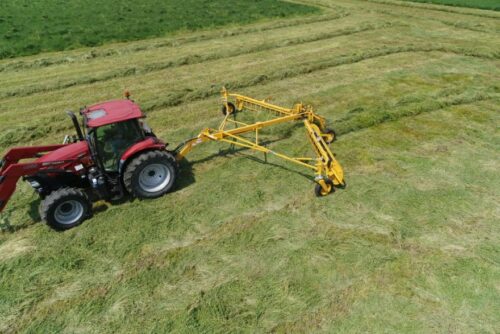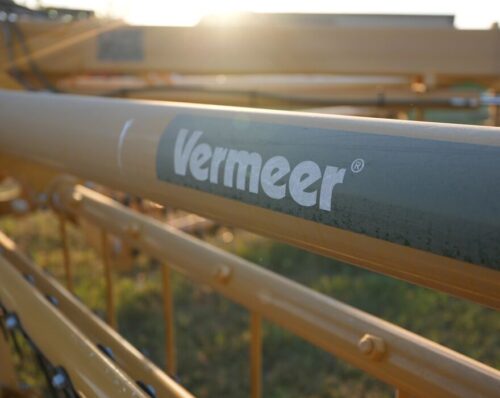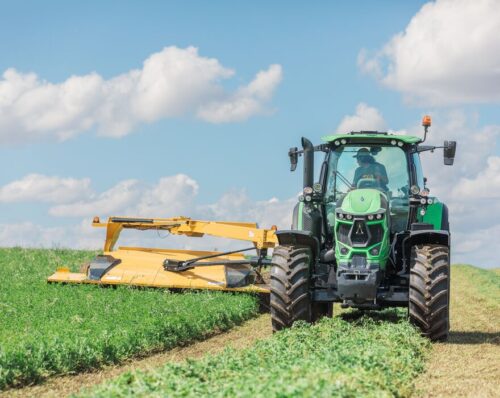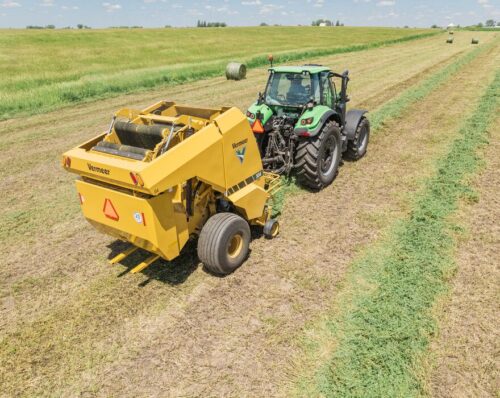
Which rake makes the best windrow for your operation?
April 2020
Bale appearance starts with the windrow. Find a rake that will fit your operation.
Good, consistent bale appearance starts with the windrow, often produced by the rake. It is important to keep the windrow dispersed evenly across the bale chamber in order to get a good-looking product when the bale is ejected.
Using a windrow that is considerably wider than the baling chamber may result in a saddle-shaped bale. Dome-shaped windrows might turn into a bale that is taller in the middle than the outsides. The ideal situation is a windrow that is exactly the chamber width or just a little bit wider. Compared to a narrow windrow, an additional benefit of a full chamber width windrow is, it may also assist in the speed up of hay dry down by giving the hay more surface area.
With three different styles of rakes to choose from, it is important to know the differences between them and ultimately, how their windrows differ from each other.
Vermeer offers three types of rakes
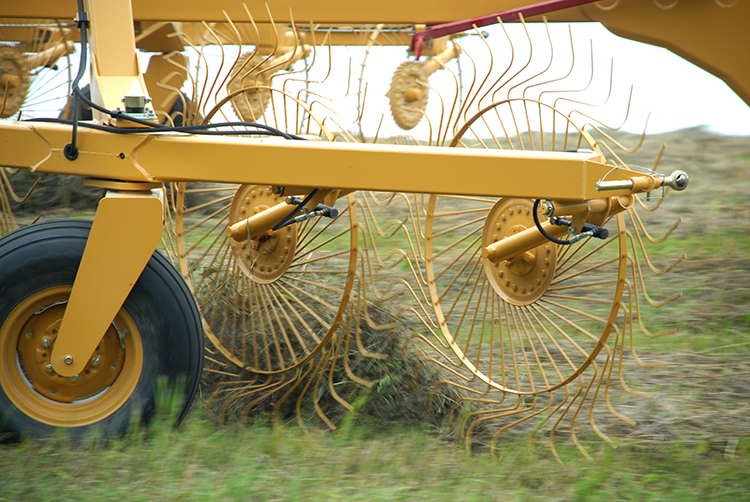
Twin basket rakes are sometimes referred to as twin rakes, parallel bar rakes or basket rakes. Twin basket rakes often include a hydraulic drive system, eliminating the need for ground contact as a power source and ultimately help to minimize the amount of dirt or ash in the windrow. This type of rake is capable of adapting to a wider range of crops at various moisture levels, making it a more capable rake in most hay crops than wheel rakes. Models like the Vermeer R2800 twin basket rake are consequently able to handle wetter, heavier forage crops in addition to performing well in dry hay. Because teeth don’t come into contact with the ground, twin basket rakes offer an overall durability and ease of maintenance.
At a price point comparable to twin basket rakes of similar size, rotary rakes provide mechanical drive systems, handle wet, heavier forage crops well and minimize contamination by keeping teeth off the ground. The Vermeer RR140 rotary rake, for example, features arms with double tines that handle a crop gently, and hydraulic lift and rake adjustments that help minimize ash content, both of which help maintain high forage quality. The size and features of this rake make it ideal for operations making high-quality small square bales. Though they can handle a wide variety of forage types and weights with moderate horsepower requirements, rotary rakes aren’t as capable of high field speeds and require more attention to maintain.
Different rakes, different windrows
Three different rakes with multiple differences including the shape of their windrow – but is one better than the other? According to Vermeer product managers, Josh Vrieze and Shawn Wang, the answer may be yes depending on your conditions.
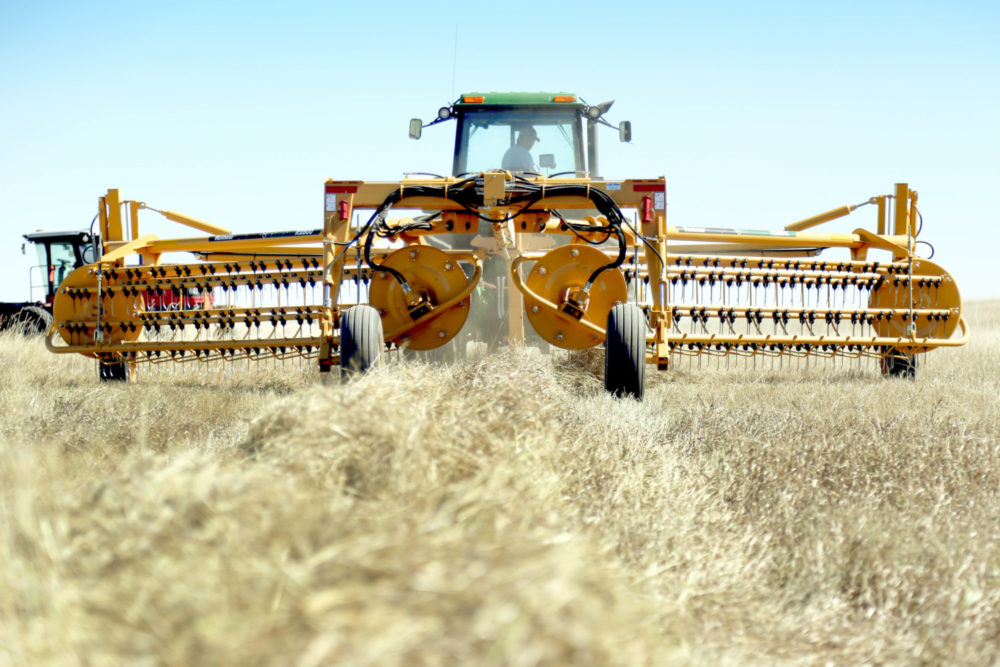
A basket rake can be adjusted so the windrow resembles a square box shape which helps to shape a more consistent, squarer-shouldered bale. Although a wheel rake is priced more economically, it can be more difficult to achieve the desired windrow size, shape and consistency and can result in a dome-shaped windrow. Similarly, a rotary rake has a higher chance of producing a dome-like windrow.
Unlike a ground-driven wheel rake, a basket rake is hydraulically driven, meaning the speed of the wheels is consistent across the field. With wheel rakes, it is common to have inconsistent windrows due to different operating speeds and ground conditions in different parts of the field.
“When using a wheel rake it can look very different at the end of the windrow since the tractor slows down substantially. While turning, the inside wheels are also going to be going slower than the outside wheels,” Vrieze says. “With a twin basket rake, the rake is controlled by the hydraulic drive, so they are consistent.”
Are you looking to add a new hay rake to your operation? Find out which Vermeer model is right for you at Vermeer.com/rakes.
Vermeer Corporation reserves the right to make changes in engineering, design and specifications; add improvements; or discontinue manufacturing at any time without notice or obligation. Equipment shown is for illustrative purposes only and may display optional accessories or components specific to their global region. Please contact your local Vermeer dealer for more information on machine specifications. Vermeer and the Vermeer logo are trademarks of Vermeer Manufacturing Company in the U.S. and/or other countries. © 2020 Vermeer Corporation. All Rights Reserved.


